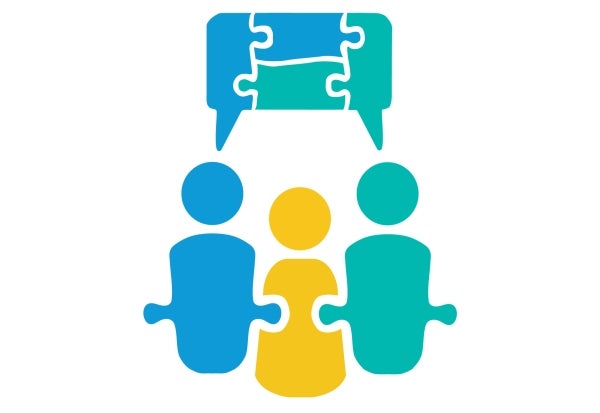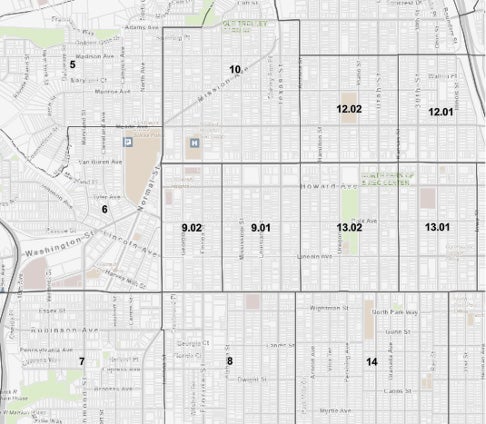Communicating with the Public
Translation and Interpretation

The City of San Diego utilizes translation and interpretation services to provide meaningful access to public information and engagement opportunities. Translation refers to the process of converting written documents to another language, and interpretation refers to the process of conveying spoken words between languages. Both translation and interpretation should convey the tone, style and intent of the text or speaker while considering differences of culture, dialect and setting.
This section addresses the City’s translation and interpretation standards, best practices and how to access services.
Citywide-level language information
Important: As the datasets on this page are provided by an external organization, please note their availability and content are subject to change. The guidance provided here is accurate as of the date of publication, and specific steps required to retrieve information may be subject to change.
Table 14 below shows the different languages spoken among people in the city of San Diego who speak English “less than very well,” as identified by the U.S. Census Bureau.
Table 14 – Different language preference groups in San Diego who speak English "less than very well"
Table 1 Source: U.S. Census Bureau, "Language Spoken at Home by Ability to Speak English for the Population 5 Years and Over." American Community Survey, ACS 1-Year Estimates Detailed Tables, Table C16001, 2023. This table highlights languages where at least 1,000 Individuals self-reported speaking English “less than ‘very well.’” A breakdown of all languages spoken across the City’s population is available online.
Community-level language information
Guidance is provided below on how to retrieve language preference information at the community level. City staff may consult with the Performance & Analytics Department for more detailed information or assistance.
Departments can also work with community-based organizations to identify languages relevant to a community and solicit input on how to make documents culturally appropriate for community members.
- Navigate to the "Language Spoken at Home by Ability to Speak English for the Population 5 Years and Over" Census dataset
- Select the Geos button at the top bar for the list of geographies
- Select ‘Census Tracts’ > “California” > “San Diego County, California” and then the applicable tracts for your project area.
- If the Census tracts for the project area are not known, the San Diego Association of Governments (SANDAG) publishes a Geographic Boundary Viewer Tool that can be accessed and searched to determine the appropriate Census tracts.
- Click the “Map Layers” button at the top right of the screen to see the list of different map layers. All the layers will be turned off by default, as indicated by the crossed-out eye icon
- Click the eye icon next to “Census Boundaries and Zip Codes” to turn on the layer
- Click the dropdown button to the left of “Census Boundaries and Zip Codes” to see the sub-layer list
- Click the eye icon next to “Census Tract” to turn on the Census Tract layer
- Zoom into the community/project area. The Census tract boundaries are designated by a black border. The Census tract number appears at the center of the polygon
- If the Census tracts for the project area are not known, the San Diego Association of Governments (SANDAG) publishes a Geographic Boundary Viewer Tool that can be accessed and searched to determine the appropriate Census tracts.

How to access services
To access translation or interpretation services to communicate with people with different language preferences, staff can:
- Assess language needs before hosting public engagement events through pre-engagement surveys or event registration forms that allow registrants to indicate a request for language interpretation services.
- Prepare translated materials and presentation slides for side-by-side or above-below translation based on anticipated audiences and requests.
- Use the following flyers to help facilitate initial interactions with individuals who have limited English proficiency:
- We Speak Your Language! (accessible to City staff only)
- I Speak... (Point to Your Language) (accessible to City staff only)
- How to say "one moment, please" (accessible to City staff only) in common languages
- Access instant over-the-phone interpretation services through the City’s Language Line (accessible to City staff only).
- The Google™ Translate tool located on the top-right of most City webpages can automatically translate webpages.
- Request translation and interpretation services from the Communications Department (accessible to City staff only).
- Note that flyers, emails and limited tasks may require three to five business days to complete translation based on vendor availability. Presentations may require seven to 10 days’ notice, depending on the amount of text. Tasks with more text, such as staff reports, executive summaries and toolkits, generally require two to four weeks’ notice. Large documents such as entire plans may require four to six weeks’ advance notice.
Best practices for public engagement translation and interpretation
Translation
- For translation, start with clear and concise English text with minimal acronyms and jargon that may be challenging to translate.
- Translate the name of the initiative or program on first reference in text or materials.
- Optionally, include a short explanation of any branded program names in parentheses if needed for clarity.
- Do not translate logos. Keep the logo in its original language.
- Staff should advertise engagement opportunities in the appropriate language(s) of a project area.
- For example, when advertising a Spanish survey, use "¡Llene la encuesta!" instead of "Take the Spanish survey!".
Interpretation
- Brief the interpreter by providing presentation materials, clarifying any technical terms that are essential to the discussion and scheduling a dry run with the interpreter when possible.
- Allow only one person to speak at a time so that their words can be interpreted clearly.
- Speak at a regular rate of speech so that the interpreters can provide a clear and meaningful interpretation of the information presented. When reading from a written speech or presentation, some people tend to talk faster than their normal rate of speech.
- If there will be timed public comment, any speaker requesting interpretation should be given double the time limit to allow sufficient time for interpretation.
- The ADA requires the City to communicate effectively with people with disabilities by providing aids and services such as a qualified sign language interpreter or assistive listening devices when requested. See Administrative Regulation 96.20 for more information.
Communicating with the Public
- Introduction
- Affirmative Language
- Clear, Simple and Inclusive Language
- Communication Strategies for Different Learners
- Conflict Management
- Document Accessibility
- Facilitation of Engagement Events
- Inclusive Graphic Design
- Nonverbal Communication
- Paid Advertising
- Public Speaking
- Translation and Interpretation
- Trauma-informed Engagement


 Inclusive Public Engagement Guide
Inclusive Public Engagement Guide